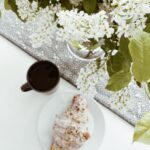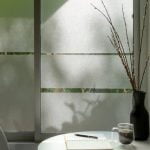Are you wondering how to decorate your Victorian home to truly embrace its historical charm and elegance? Victorian architecture and interior design are characterized by ornate detailing, high ceilings, intricate moldings, and a sense of grandeur. In this article, we will explore the key features of Victorian homes and provide valuable tips for decorating and furnishing your own Victorian abode.
Victorian homes are known for their opulent style and rich history. From the exterior façade to the interior decor, these homes exude a sense of grandeur and sophistication. In this section, we will delve into the history and characteristics of Victorian architecture and interior design to provide you with a comprehensive understanding of this unique style.
We will discuss how to embrace the typical color palette used in Victorian homes, including deep, rich colors and bold patterns. Additionally, we will provide insights on selecting wallpaper that complements the period aesthetic of a Victorian home.
From furnishings to decorative accents, we will also offer suggestions for incorporating antiques, stained glass, tassels, fringes, as well as elaborate lighting fixtures to create a warm and inviting atmosphere in your home. Whether it’s about flooring options or window treatments suited for a Victorian home – this section aims to equip you with all the necessary knowledge to truly elevate your living space with authentic Victorian design elements.
Color Palette and Wallpaper Choices
Victorian homes are known for their rich and bold color palettes, which play a significant role in capturing the essence of this era. Deep and vibrant hues like burgundy, forest green, and royal blue were popular choices for interior walls in Victorian homes.
These colors were often complemented with intricate wallpaper patterns featuring florals, paisleys, or damasks to achieve a truly authentic look. When considering how to decorate your Victorian home, it is essential to incorporate these characteristic color schemes and wallpaper styles.
Selecting the right wallpaper for your Victorian home involves careful consideration of historical accuracy and aesthetic appeal. Look for wallpapers that reflect the opulence and drama of the Victorian era while also adding visual interest to your interiors.
Additionally, it’s important to take into account the use of borders and friezes, as they were commonly used in Victorian homes to add a finishing touch to wall coverings. Embracing these traditional elements will help you achieve an authentic period look in your home.
When decorating your Victorian home, don’t be afraid to experiment with bold colors and patterns. Dark, moody hues paired with intricate wallpapers can create a sense of grandeur that is characteristic of Victorian interior design. Furthermore, incorporating luxurious fabrics such as velvet or brocade can elevate the overall aesthetic of your space. By paying attention to these details, you can effectively capture the essence of Victorian style in your home decor.
| Victorian Home Decor | Key Elements |
|---|---|
| Color Palette | Rich and bold hues like burgundy, forest green, and royal blue |
| Wallpaper Choices | Intricate patterns like florals, paisleys, or damasks; use of borders and friezes |
| Experimentation | Don’t be afraid to experiment with bold colors and patterns; incorporate luxurious fabrics such as velvet or brocade |
Furnishings and Decor
When it comes to decorating a Victorian home, furnishings and decor play a crucial role in capturing the essence of the era. One of the most important aspects of furnishing a Victorian home is incorporating antiques and furniture pieces that are true to the period. Look for pieces with intricate carvings, ornate details, and rich wood finishes to add authenticity to your space.
In addition to furniture, decorative elements such as stained glass, tassels, fringes, and elaborate upholstery can enhance the Victorian aesthetic of your home. Consider incorporating these elements into curtains, cushions, and other soft furnishings to add opulence and elegance to your space.
Another key aspect of decor in Victorian homes is the use of decorative accents such as porcelain figurines, decorative plates, and ornate mirrors. These pieces can be used to create focal points within rooms and add a touch of grandeur to your interior design.
It’s important to remember that while Victorian decor is known for its ornate features, it’s also essential to strike a balance between opulence and functionality. Incorporating comfortable seating options and practical storage solutions into your Victorian home will ensure that it remains a livable and inviting space for you and your guests.
| Decorating Tips | Key Features |
|---|---|
| Select antiques and Victorian-era furniture | Intricate carvings, ornate details |
| Incorporate stained glass, tassels, fringes | Add opulence and elegance |
| Use decorative accents like porcelain figurines | Create focal points within rooms |
Flooring and Carpets
When it comes to decorating a Victorian home, the flooring and carpets play a crucial role in establishing the period aesthetic. Victorian homes typically feature hardwood floors, parquet designs, and intricate tile patterns that exude elegance and sophistication. To stay true to the historical context of a Victorian home, it’s important to carefully consider the flooring options and carpet styles that align with the overall design.
Authentic Flooring Options
For an authentic Victorian look, hardwood floors are a popular choice. Oak, mahogany, and cherry wood are prominent options for creating an opulent atmosphere in line with Victorian interior design. Additionally, parquet flooring with geometric patterns can add a touch of grandeur to the space, reflecting the intricate detailing often found in Victorian homes. When considering tiling options, elaborate mosaic patterns or encaustic tiles can bring an authentic Victorian feel to the home.
Victorian-Inspired Carpets
In rooms where carpeting is preferred over hard flooring, choosing carpets that align with the Victorian aesthetic is essential. Oriental rugs with intricate patterns and rich colors are ideal for adding warmth and luxury to a Victorian home. Additionally, Axminster or Wilton carpets with elaborate floral motifs can create a sense of grandeur while staying true to the period style.
While modern choices in flooring and carpeting may be more convenient or cost-effective, sticking to authentic options will help maintain the historic charm of a Victorian home. By incorporating hardwood floors or ornate carpets that reflect the opulence of this era, homeowners can truly embrace the unique character of their Victorian property.
If you’re wondering how to decorate your Victorian home, paying attention to detail when it comes to flooring and carpets is paramount in achieving an authentic look.
Window Treatments
When it comes to decorating a Victorian home, paying attention to window treatments is crucial in capturing the essence of the era. Victorian homes are known for their heavy, luxurious window treatments that exude opulence and sophistication.
To achieve the perfect window treatment for your Victorian home, consider the following tips:
- Selecting fabric: Opt for rich, sumptuous fabrics like velvet, damask, or brocade in deep, jewel-toned colors. These fabrics will add a touch of luxury to your windows and create a regal ambiance in any room.
- Choosing trims and embellishments: Embrace the Victorian love for opulence by incorporating trims and embellishments such as tassels, fringes, and intricate braids on your draperies or valances. These details will add an extra layer of lavishness to your window treatments.
- Layering: To achieve an authentic Victorian look, consider layering different types of window treatments such as sheers, curtains, swags, and valances. This not only adds depth and dimension to your windows but also allows you to play with different textures and patterns.
By paying attention to these details when choosing window treatments for your Victorian home, you can effectively capture the grandeur and elegance of the era while creating a truly unique and timeless interior design.
So take time looking at these kinds of window treatments mentioned earlier if you’re wondering how to decorate my victorian home.
Lighting
When it comes to decorating a Victorian home, the importance of elaborate lighting fixtures cannot be overstated. The right lighting can create a warm and inviting atmosphere, while also showcasing the ornate details and intricate design of the home. In this section, we will explore how to select and incorporate proper lighting choices to enhance the Victorian aesthetic.
Elaborate Lighting Fixtures
One of the defining features of Victorian interior design is the use of elaborate lighting fixtures, such as chandeliers and sconces. These fixtures are not only functional but also serve as statement pieces that add a touch of opulence to the space. When selecting lighting for a Victorian home, look for pieces with intricate detailing, such as crystal accents or decorative metalwork. Opt for fixtures with multiple bulbs to provide ample illumination for larger rooms with high ceilings.
Creating a Warm Atmosphere
In addition to grand chandeliers and sconces, incorporating table lamps and floor lamps can help create a warm and welcoming ambiance in a Victorian home. Look for lamp styles that reflect the ornate nature of the era, such as Tiffany-style stained glass lamps or brass base lamps with fringed shades. It’s important to consider both ambient and task lighting when choosing lamps for different areas within the home.
Proper Placement
When placing lighting fixtures in a Victorian home, consider both aesthetic appeal and functionality. Chandeliers are commonly placed in entryways, dining rooms, and formal living spaces to make a grand statement. Sconces can be used to illuminate hallways or accentuate architectural features like fireplace mantels or built-in shelving. Table lamps can provide supplementary lighting on side tables in sitting areas or bedside tables in bedrooms.
By paying attention to the details when selecting and placing lighting fixtures in your Victorian home, you can create an atmosphere that highlights its unique charm and elegance.
Art and Decorative Accents
When it comes to decorating a Victorian home, paying attention to the finer details is crucial in creating an authentic and elegant interior. Art and decorative accents play a significant role in enhancing the Victorian decor, adding a touch of opulence and sophistication to the space. From ornate mirrors to porcelain figurines, there are various elements that can be incorporated into a Victorian home to capture the essence of this timeless style.
One key aspect of art and decorative accents in Victorian homes is the use of ornate mirrors. Large, intricately designed mirrors were a staple in Victorian interiors, often placed above fireplaces or as standalone statement pieces. The frames were typically adorned with elaborate carvings and gilded finishes, adding a touch of grandeur to the room. Additionally, paintings and sculptures were also popular decorative elements, showcasing romanticized scenes or classical subjects that reflected the artistic taste of the era.
In addition to mirrors, porcelain figurines and decorative plates were commonly used to adorn mantelpieces, shelves, and cabinets in Victorian homes. These delicate and finely crafted items added a sense of refinement to the space, often featuring intricate designs and vibrant colors.
When selecting art and decorative accents for a Victorian home, it’s important to choose pieces that resonate with the period aesthetic and contribute to the overall ambiance of elegance and luxury. By curating a collection of these ornate elements, homeowners can truly capture the essence of Victorian interior design.
Outdoor Spaces and Landscaping
When it comes to decorating a Victorian home, it’s essential to pay attention to the outdoor spaces and landscaping to create a cohesive and elegant look. Victorian architecture often includes beautiful outdoor features that should be highlighted and complemented with carefully chosen landscaping elements. Here are some tips on how to enhance the outdoor spaces of your Victorian home:
- Embrace intricate fencing: Victorian homes typically feature ornate wrought iron or intricately carved wooden fencing. Embrace this characteristic by choosing fencing with elaborate designs that reflect the era.
- Include period-appropriate plantings: When selecting plants for your Victorian home’s exterior, opt for species that were commonly used during the Victorian era. This may include vibrant and fragrant flowers like roses, lavender, and hydrangeas.
- Consider topiaries: Adding topiaries to your outdoor space can evoke the formal and elegant style of Victorian landscaping. Trimmed into geometric or whimsical shapes, topiaries can bring a sense of refinement to your gardens.
In addition to the above-mentioned elements, it’s crucial to maintain a well-manicured lawn and neatly trimmed hedges in order protect your garden. With careful attention to detail, you can create an outdoor space that is in harmony with the charm and elegance of your Victorian home.
Remember that a well-curated outdoor space enhances the overall appeal of your home while providing an extension of its unique character and style. By following these guidelines for landscaping and outdoor decor, you can ensure that your Victorian home presents a stunning visual from both inside and out.
Conclusion
In conclusion, decorating a Victorian home is a task that requires attention to detail and an appreciation for the opulence of this historical style. From choosing the right color palette and wallpaper to selecting furnishings and decor that are true to the Victorian era, there are many elements to consider when transforming your home. By incorporating authentic features such as hardwood flooring, elaborate window treatments, and ornate lighting fixtures, you can achieve a truly authentic Victorian look.
It’s important to remember that the key to successfully decorating a Victorian home lies in paying homage to the historical period while also infusing your own personal style. Incorporating antiques and decorative accents, as well as maintaining a cohesive aesthetic between indoor and outdoor spaces, can help create a sense of timeless elegance. Overall, embracing the unique charm and grandeur of Victorian interior design is the best way to bring out the full potential of your historic home.
As you embark on this journey of transforming your living space into a Victorian masterpiece, keep in mind that attention to detail is crucial. From the intricate moldings and high ceilings to the use of rich colors and bold patterns, every aspect of your home should reflect the grandeur of its era. With careful planning and consideration for authenticity, you can create a space that exudes all the grace and elegance that comes with Victorian design.
Frequently Asked Questions
How to Decorate Your Home in Victorian Style?
Decorating your home in Victorian style involves incorporating ornate furniture, rich colors, and elaborate patterns. Look for antique pieces, plush fabrics like velvet and brocade, and decorative details such as tassels and fringe.
How Did the Victorians Decorate Their Homes?
Victorians decorated their homes with a mix of furniture styles, including Eastlake, Gothic Revival, and Renaissance Revival. They used dark, heavy woods like mahogany and walnut, and adorned their homes with decorative objects like porcelain figurines, oil paintings, and elaborate drapery.
What Makes a House Look Victorian?
Several factors contribute to a Victorian-style home’s appearance. These include intricate woodwork like crown molding and wainscoting, ornate chandeliers and light fixtures, decorative wallpaper or wall treatments, stained glass windows or doors, and overall opulence in decor choices.

I’m thrilled to be your companion on this exciting journey through the world of home decor and design. With a passion for turning houses into homes and a keen eye for the finer details, I’m here to help you transform your living spaces into beautiful, functional, and meaningful havens.





